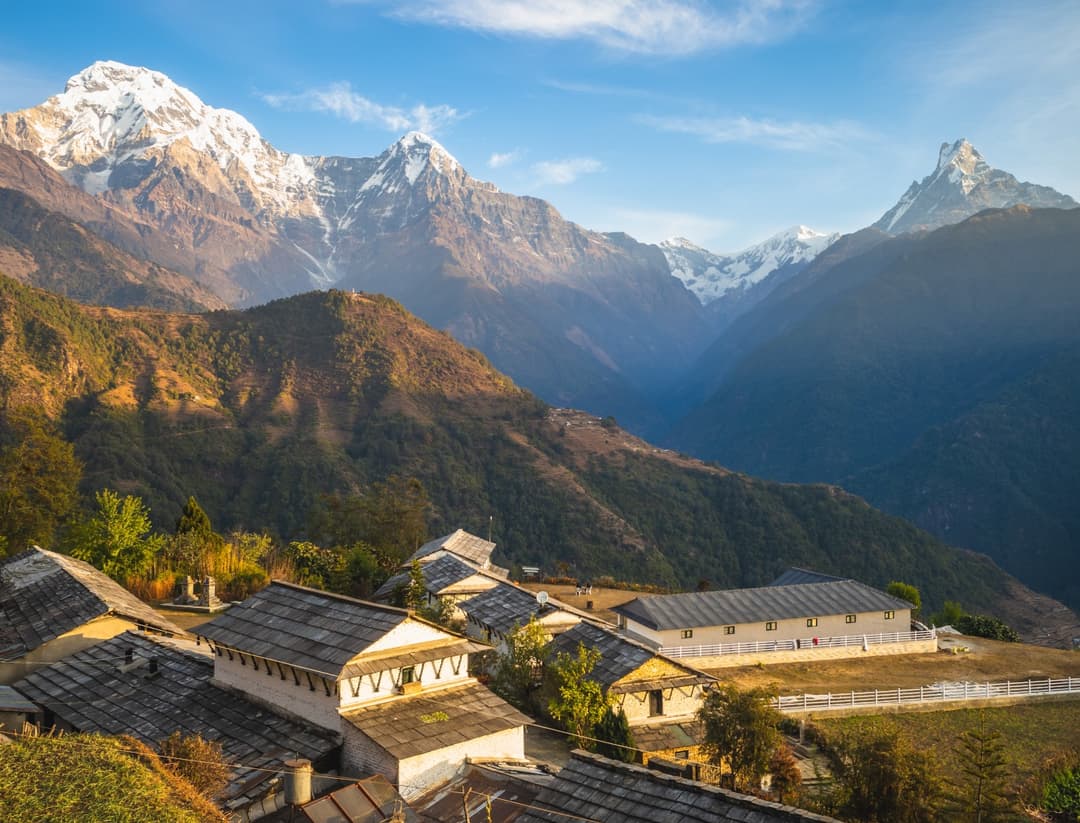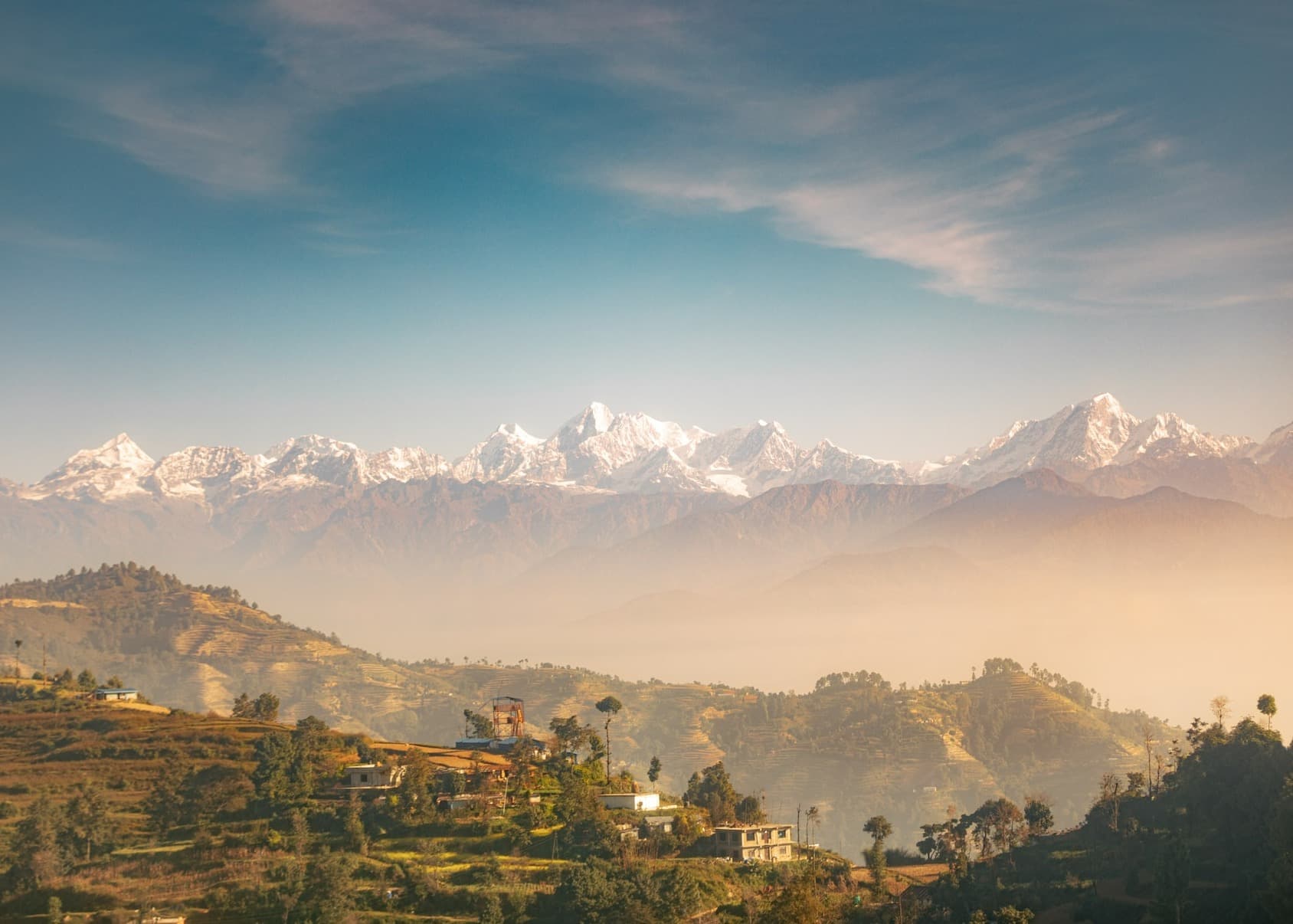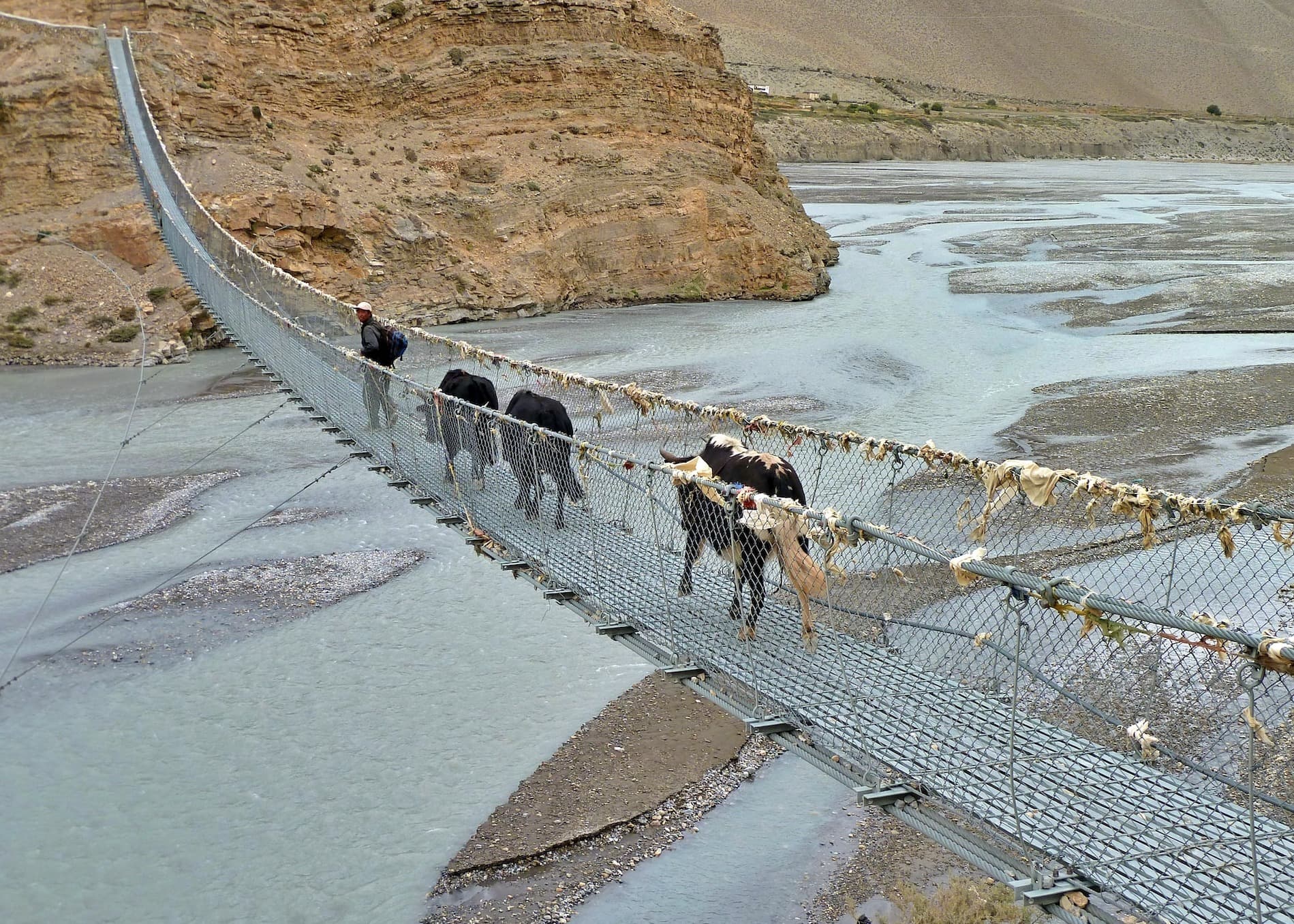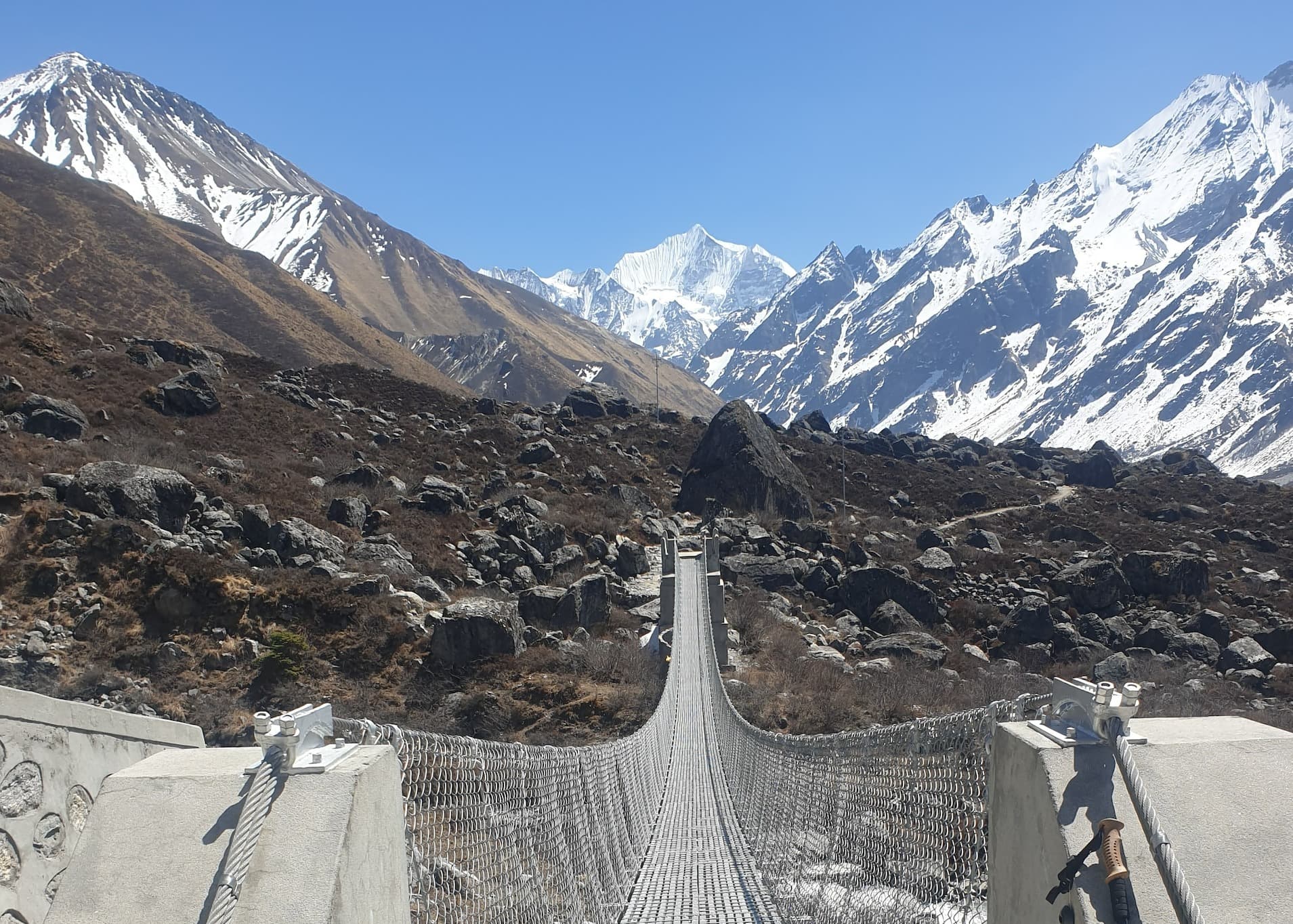Langtang National Park is a spectacular protected area located in the central part of Nepal. It was established in 1976 and covers an area of approximately 1,710 square kilometers (660 square miles). The park is named after the beautiful Langtang Valley, which is one of its major attractions.
Langtang National Park is situated in the rugged Himalayan region, bordering Tibet to the north. It is renowned for its breathtaking alpine scenery, including towering snow-capped peaks, pristine glaciers, lush forests, and picturesque valleys. The park encompasses parts of the Langtang Himal, Jugal Himal, and Ganesh Himal mountain ranges, offering a diverse range of landscapes.
The park's rich biodiversity is a significant feature. It is home to numerous species of flora and fauna, including rare and endangered wildlife. Visitors can spot animals such as the red panda, snow leopard, Himalayan black bear, musk deer, and various species of monkeys and birds. The region's unique blend of ecosystems, ranging from subtropical forests to alpine meadows, supports this remarkable variety of wildlife.
In this blog, we will delve into the details of Langtang National Park, including permit requirements, trekking options, and the remarkable flora and fauna that call this place home.
Best Seller Treks
Permit Required for Langtang National Park
Langtang National Park Entry Permit: The Langtang National Park Entry Permit is a mandatory permit that grants you access to the national park. This permit can be obtained in Kathmandu or through authorized trekking agencies.
The cost of the permit is approximately USD 30 per person. It is advisable to carry multiple copies of your passport and a couple of passport-sized photographs for the permit application process.
TIMS (Trekkers' Information Management System) Card: The TIMS card is another important permit required for trekking in Langtang National Park. It is a database card that provides information about trekkers and helps in maintaining their safety and security.
The TIMS card can also be obtained in Kathmandu or through authorized trekking agencies. The cost of the TIMS card is approximately USD 20 per person. Like the Langtang National Park Entry Permit, it is recommended to carry multiple copies of your passport and passport-sized photographs.
Both permits are necessary to ensure the conservation of Langtang National Park and to facilitate better management of the trekking activities within the park. These permits contribute to the preservation of the park's natural beauty, support local communities, and help in providing necessary facilities and services for trekkers.
Trekking Routes in Langtang National Park
- Langtang Valley Trek: This trek takes you through the stunning Langtang Valley, where you can witness panoramic views of snow-capped peaks, pristine alpine forests, and charming Tamang villages. The trail usually starts from Syabrubesi and ascends gradually, passing through beautiful rhododendron forests and traditional settlements.
- Langtang Gosainkunda Trek: The Langtang Gosainkunda Trek is a sacred journey that combines natural beauty with religious significance. It takes you to the pristine Gosainkunda Lake, considered holy by both Hindus and Buddhists. This trek offers breathtaking views of the surrounding mountains and an opportunity to immerse yourself in the local culture.
- Helambu Trek: Perfect for those with limited time, the Helambu Trek offers a shorter but equally rewarding experience. This trek takes you through the culturally rich Helambu region, where you can explore traditional villages, Buddhist monasteries, and terraced farmlands. The trail offers splendid views of the Langtang Himalayan range.
Flora and Fauna Found in Langtang National Park
It is known for its diverse flora and fauna, with a wide range of ecosystems including sub-tropical forests, alpine meadows, and high-altitude glaciers. Langtang National Park is not only visually stunning but also plays a crucial role in supporting the park's ecosystem. The diverse plant life provides habitat and food for numerous animal species, contributes to soil conservation, and helps maintain the overall ecological balance of the area.
Flora (plants) in Langtang National Park
Langtang National Park is renowned for its rich biodiversity and diverse flora. The park encompasses a wide range of altitudes, from subtropical forests to alpine meadows, resulting in a variety of vegetation. Here are some of the notable floras found in Langtang National Park:
- Rhododendrons: Langtang National Park is famous for its stunning displays of rhododendron blooms. During the spring season (March to April), the hillsides come alive with vibrant shades of pink, red, and white as numerous species of rhododendrons burst into flower. These colorful blooms create a spectacular sight for trekkers and nature lovers.
- Oak Forests: The lower regions of Langtang National Park are covered with dense oak forests. Various species of oak, such as Quercus semecarpifolia and Quercus lanata, can be found here. These forests provide shelter to many species of birds and wildlife.
- Alpine Meadows: As you ascend higher into the park, you will come across beautiful alpine meadows. These meadows are adorned with a variety of grasses, wildflowers, and small shrubs. The meadows offer a striking contrast to the rugged mountain landscapes and provide grazing areas for wildlife.
- Bamboo Groves: Bamboo is abundant in Langtang National Park, especially in the lower elevations. Thick bamboo groves create a unique and serene atmosphere within the park. The tall bamboo shoots sway in the breeze, adding to the natural beauty of the surroundings.
- Medicinal Plants and Aromatic Herbs: The park is home to numerous medicinal plants and aromatic herbs. Local communities have long used these plants for their healing properties and traditional medicine. Some commonly found species include Himalayan blue poppy, spikenard, ginseng, and various species of mint and thyme.
- Alpine Flowers: As you venture into higher elevations, you will encounter a variety of alpine flowers. Delicate blooms such as primroses, gentians, edelweiss, and saxifrages dot the landscape, adding splashes of color to the rocky terrain.
- Fir and Pine Forests: As you ascend through the park, you will come across dense forests of fir and pine trees. Species such as Himalayan fir (Abies spectabilis) and blue pine (Pinus wallichiana) dominate these forests. These evergreen trees provide habitat for various bird species and contribute to the park's overall biodiversity.
- Juniper Bushes: Juniper bushes are a common sight in the higher elevations of Langtang National Park. These hardy shrubs are well adapted to the harsh alpine conditions. They often grow in clusters, forming thickets that provide cover for wildlife.
- Mosses and Lichens: Langtang National Park is rich in mosses and lichens, particularly in the cooler and wetter areas. These organisms play a crucial role in the park's ecosystem by helping retain moisture, preventing soil erosion, and serving as food sources for certain wildlife.
- Edible Plants: The park is also home to several edible plant species. Local communities utilize these plants for sustenance and traditional recipes. Examples include wild strawberries, nettles, wild spinach, and various types of mushrooms.
Fauna (Animals) in Langtang National Park
- Red Panda: One of the most iconic species in the park, the red panda (Ailurus fulgens) is a small, arboreal mammal known for its distinctive red fur and bushy tail. This elusive and endangered species primarily inhabits the forests of Langtang, feeding mainly on bamboo shoots, leaves, and fruits.
- Himalayan Black Bear: Langtang National Park is home to the Himalayan black bear (Ursus thibetanus), a species of bear found in the higher elevations. These bears have a shiny black coat and are primarily herbivorous, feeding on berries, fruits, nuts, and occasionally small mammals.
- Musk Deer: The park is also home to the musk deer (Moschus spp.), a small deer species known for the musk gland found in males. They inhabit the forested areas of Langtang and are primarily herbivorous, feeding on leaves, twigs, and grasses.
- Snow Leopard: Langtang National Park is part of the snow leopard's (Panthera uncia) range, although sighting this elusive and endangered big cat is extremely rare. Snow leopards are perfectly adapted to the high-altitude environments and rocky terrain, preying on Himalayan blue sheep and other mountain ungulates.
- Himalayan Tahr: The Himalayan tahr (Hemitragus jemlahicus) is a large ungulate species found in the higher reaches of the park. These sure-footed animals have a shaggy coat and curved horns. They graze on alpine grasses and can be seen traversing the steep cliffs and rocky slopes.
- Langur and Rhesus Macaque: Two primate species, the gray langur (Semnopithecus spp.) and the rhesus macaque (Macaca mulatta), can be found in Langtang National Park. These intelligent and social primates inhabit the forests and can often be seen foraging for food or leaping through the treetops.
- Birds: Langtang National Park is a paradise for birdwatchers, with over 300 species of birds recorded. The park is home to a variety of avian species, including the colorful impeyan pheasant (danphe), Himalayan monal, blood pheasant, Tibetan snowcock, and various species of eagles, vultures, and falcons.
- Other Wildlife: Langtang National Park also supports a diverse array of wildlife, including the common leopard, Himalayan goral, wild boar, Himalayan palm civet, and numerous species of squirrels, bats, and reptiles.
These are just a few examples of the rich flora and fauna diversity found in Langtang National Park. The park's unique location and varying elevations provide a range of habitats that support a wide array of plant and animal life.
In conclusion, Langtang National Park is a captivating destination that offers a unique blend of natural beauty, cultural heritage, and diverse flora and fauna. The park requires a permit for entry, ensuring the conservation and preservation of its delicate ecosystem.
The trekking experience in Langtang National Park is a truly rewarding adventure. With its breathtaking landscapes, towering mountains, and picturesque valleys, the park offers a wide range of trekking routes suitable for both beginners and experienced trekkers. From gentle walks through lush forests to challenging climbs to high-altitude passes, there is something for everyone.











